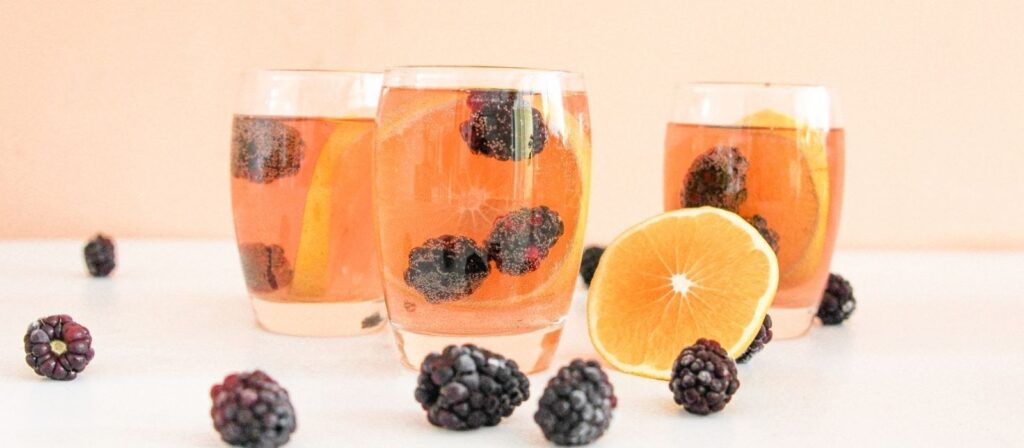Disclosure of Material Connection: Some of the links in the post above are "affiliate links." This means if you click on the link and purchase the item, I will receive an affiliate commission. Regardless, I only recommend products or services I use personally and believe will add value to my readers. I am disclosing this in accordance with the Federal Trade Commission's 16 CFR, Part 255: "Guides Concerning the Use of Endorsements and Testimonials in Advertising."
Cheese and wine. Wine and cheese. I mean…..what a truly heavenly combination. It doesn’t get much better if you ask me. To serve some high quality cheese and a great wine to go with it is so classy, feels so luxurious and to top that it is also very versatile. It can be served as your classical snack, pretty much as a full meal, as a bite before your dessert or even as a after dinner treat. So, what is the best cheese with red wine? We’ll break down everything you need to know about two of history’s best friends!
A Long History
Both cheese and wine have been around for thousands of years which in itself is pretty amazing. Due to the long history of wine- and cheesemaking in the old world countries the two had plenty of time to develop a perfect partnership. Looking back throughout history the notion that cheese is IT has been ever present. Old scripts, archeological findings and ancient stories all tell tales about the importance of cheese to mankind for thousands of years. I mean wow. In the old testament father Abraham is mentioned as a purveyor of cheese. In Jerusalem some time around Jesus’s birth a street is named ”the cheese maker’s street”. And, in Rome the inhabitants are almost obsessed with cheese and the saying ”nulla caena sine caseum” is coined. This truth translates to no dinner without cheese. And that pretty much covers it, doesn’t it?
….And then with the marvel of cheese, just add wine. A historical drink with beneficial properties. These two charming and carefully crafted agricultural products are without a doubt the best of two worlds and compliment each other incredibly well. The finess with cheese is that when it comes to pairing with wine, it is quite hard to go totally wrong. But, with some pointers, you can reach the stars!
Cheese With Wine
One practical matter about cheese is that considering the hundreds of types, styles and flavors that exist there is always a possibility for a good match with wine. You can always find that one wee cheese that works gloriously with the bottle of your choosing. And furthermore don’t forget it is entirely up to you. If you like the way they taste together you have made a great personal choice. That said, it can be a challenge to select the right cheese to match your mood, wallet and wine. Your mind is often set to find that perfect combo. I hear you. You want to scout out the cheese that is just right with the bottle of wine just purchased. Or perhaps you invested in a bit of a wild card, a new recommendation you cant wait to try on. How on earth do you pick out the best cheese?
So Much Cheese, So Little Time
It is not easy to familiarize yourself with all types, styles, shapes and sorts of cheese from all over the globe. Different butterfat content, origin of the milk and local traditions makes for seemingly endless variations. To complicate things further herbs, spices or wood smoke are used as flavoring agents in some cases. There’s also variables like various strains of bacteria and mold, varying length of fermentation, diverse processing and dissimilar aging.
You are offered such a vast selection standing at the counter it gets quite confusing. How could you possibly know them all? You often can’t. And the lines between soft, semi-soft, semi-hard and hard cheese are arbitrary. In this dairy jungle it is comforting to take advantage of the knowledgeable staff and to simply ask for recommendations. Tell them what wine you have in mind and they will advice you. If there’s a wait you can always practice your cheese skills though. Check out what’s in the counter and sort in different categories from soft to hard, from mild to flavorful:
Fresh cheese
High moisture content. Not matured. Little processing. No rind. Often flavored with herbs and so on. Very mild.
Example: Cottage cheese, Goat cheese, Cream cheese, Curd cheese, Fromage blanc(Also stretched curd cheeses like Mozzarella fall into this category).
Soft-ripened Cheese
Matured a short time. Mild and creamy. With rind, many times white fuzzy mold.
Example: Brie, Neufchatel, Camembert, Chévre.
Semi-soft Cheese/Washed-rind Cheese
Mild tasting, but often a bit smelly, high moisture. Rinsed and brushed with a solution of salty water with bacteria sometimes containing local herbs, beer, wine or brandy. The washing encourages growth of a bacteria that causes the odor and the orange-reddish rind.
Example: Havarti, Munster, Port Salut
Medium-hard Cheese
Aromatic, often sharp, with eyes. Nutty in flavor and aged longer. Example: Emmental, Gouda, Edam, Manchego, Comté and Gruyére.
Semi-hard/Hard Cheese
Lower moisture content equals harder cheese. These are often aged longer, pressed harder and are very salty and flavorful.
Example: Cheddar, Colby, Monterey Jack
Hard Cheese
Firm, complex, sharp in flavor. Pressed for hours or even weeks, aged for months or sometimes years. Very little water content.
Example: Grating cheeses like Pecorino and Parmesan
Blue Cheese
Blue/green spots of mold from Penicillium cultures that grows within the cheese. Unique flavor and smell. Sharp, salty, loads of umami, saline notes and quite potent.
Example: Roquefort, Stilton, Gorgonzola.
Choosing the Right Cheese to Pair With Your Wine
These different types of cheese don’t all pair with the same wine. They are way too different and far apart in flavor. A brie or camembert for example would disappear with a heavy full bodied red wine. It is way too delicate. The tannins, acidity and lush fruitiness of the wine would take over totally and mask the discrete but lovely taste of the cheese.
If we follow the cheese list above from 1-7 starting from the top we would start with creamy sparkling and light bodied white wines. We successfully pair the first type cheeses with champagne or sparkling wine. Champagne, Cava, Crémant or Cap Classique don’t matter- bubbly made with the traditional method is dreamy with Brie! This due to it’s lees-aging(wine fungi meets cheese fungi kinda thing), its acidity and rather neutral fruitiness. We move on down on the list and now need light white wines. A creamy goat cheese would blossom in the company of a white aromatic wine with good acidity, like a sauvignon blanc. It’s herbaceous notes mirrors the character of the cheese beautifully. And so on. Basically you go from the top and increase flavor, body and tannins in the wine as the cheese gets more flavorful.
Naturally, somewhere in the middle you have the option of choosing light, fruity reds as well as more full bodied whites. A washed rind cheese like Munster has loads of character and works with both full bodied whites(think regional, and pick a white wine from its home turf Alsace) or light reds. Appenzeller, Gruyere and the likes are great with medium to full bodied reds. At the end of the list you have blue cheese, and hard cheese like Parmesan or Pecorino. These puppies are very strong in flavor and needs an equally strong red wine with plenty of body, flavor, tannins and acidity.
A common mistake when enjoying cheese with wine is too wide a selection of cheese on the platter, and only ONE wine to go with. Don’t do it. One wine can’t possibly cover the whole spectrum of cheese in a satisfactory way.
Best Cheese With Different Wine
Cheese is both fat and salty and I think we can agree by now that it is great to pair with wine. A safe bet if you forget the above pointers and no one is around to guide you is the regional approach. Get a cheese made in the region the wine is from. Works every time. Another rule of thumb is that the stronger a cheese is, the more full bodied, acidic and flavorful wine it will demand.
- Sparkling white traditional method. Champagna/Cava/Crémant- Brie, Camembert, Brillat Savarin
- Light, acidic whites. Sauvignon blanc/Muscadet/Albarino: Goat cheese, Chévre
- Fruity whites, medium body, possibly a few grams of sugar. Pinot Blanc/Pinot Gris/Gewurztraminer(Alsace): Munster cheese, Vacherol or similar
- Full bodied whites. Chardonnay(oak)/Viognier: Mild washed-rind cheese like Vacherol, and also mild and buttery hard cheese like Comté and Manchego
- Light to medium bodied reds. Gamay/Pinot Noir: Above, as well as Gryere, Emmental, Appenzeller
- Medium bodied reds. Nebbiolo/Sangiovese/Valpolicella/- Cheddar, Colby, Monterey Jack,
- Full bodied reds. Shiraz/Cabernet/Amarone-Pecorino, Parmesan or Blue Cheese
Do not forget that there are many alternatives to wine, such as Belgian wheat beer, a dry cider or fruit wine. (Roomi, which is raw drink from black currants, aronia berries and pomegranate syrup, is an alcohol-free alternative with a lot of character that does well in the company of tasty cheeses)
To Jam or Not to Jam
Even if we insist on presenting honey, jam, fruit, nuts, crackers and/or other condiments on the cheese board in all honesty the cheese does not require more than a descent and suiting wine. In fact many european cheese and wine producing nations serve nothing but wine with it. The wine in itself actually contributes with all the characteristics of the jam- the berries, the fresh acidity and the fruity sweetness. It is all right there in the bottle. Handy, no?
A Sweet Deal
And by all means. You might have bought a sweet wine. These luscious babies goes beautifully with all kinds of cheese. And I mean all. Sugar is great at carrying flavor. The sweetness works in many layers as it firstly balances the wine’s acidity and secondly camouflages or moderates strong flavors in the cheese. And the sweet and salty combo is amazing. So with this we can conclude that sweet wines are extremely forgiving in combination with all kinds of cheese.
Serve the lightly colored and yellow dessert wines like Sauternes, Icewine, Moscato d’Asti and Beaume-de-Venise with light, creamy, mild cheese. Use the amber hued ones like Tokaji, Moscatel de Setubal and Madeira with your medium to hard, aged, buttery and nutty cheeses. The red sweet wines like Port wine, Rivesaltes, Maury and Recioto is preferably served with the hardest, saltiest long aged cheeses as well as with your blue cheese.
If you are invited to a dinner party and are uncertain of what wine will be served your best option is to get a couple of different cheese. Perhaps one that works with white wine, and one that is great combined with red? Better safe than sorry!






